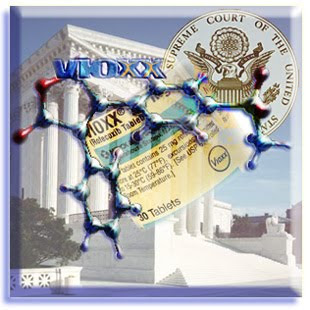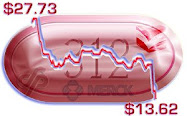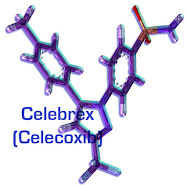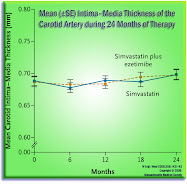 I'll confess that I've been sitting on this (a 19 page PDF file) one for a bit, as I reviewed the proposed settlement documents, thus far filed (last updated by the court clerk, electronically, as of December 21, 2011), in the federal District courthouse, in Newark, New Jersey.
I'll confess that I've been sitting on this (a 19 page PDF file) one for a bit, as I reviewed the proposed settlement documents, thus far filed (last updated by the court clerk, electronically, as of December 21, 2011), in the federal District courthouse, in Newark, New Jersey.
Regular readers will recall that we've repeatedly reported, since mid-October 2011, that it seemed there was a deal in the works, though the Merck third quarter 2011 SEC Form 10-Q provided no details as to terms.
Well, now we have at least the proposed terms -- as submitted to Judge Cavanaugh -- for preliminary approval. The deal may still be scuttled, as "not enough" in recovery for the shareholders, or for "too much," for the plaintiffs' lawyers. In any event, the proposed terms, in large part, contemplate a new board committee -- each member independent of management, each with relevant life-science, and clinical trial, experience, being interposed between the science staff, and the executive management team -- to evaluate the timeliness of completion of each study, and promptly drive the full public disclosure of all clinical trial results registered by Merck (with clinicaltrials.gov).
Just such a delay -- related to the ENHANCE results -- was almost certainly the but-for cause of the between $13 and $5 per share loss that various shareholders suffered (and closer to $20 per share, if one measures from the last public underwritten stock sale -- at $32.50).  So -- on balance, after much thought, over the holidays -- and given that the securities class actions (for money damages) are still pending, and being contested -- I'd say the terms are fair to the aggrieved shareholders. This is so, even though the settlement only covers clinical trials for products already on the market in the US -- as those kinds of trials are most likely to most directly impact New Merck NYSE stock trading prices.
So -- on balance, after much thought, over the holidays -- and given that the securities class actions (for money damages) are still pending, and being contested -- I'd say the terms are fair to the aggrieved shareholders. This is so, even though the settlement only covers clinical trials for products already on the market in the US -- as those kinds of trials are most likely to most directly impact New Merck NYSE stock trading prices.
Not rich, by any means -- and certainly, the plaintiffs' lawyers have earned their $5 million in fees -- but probably fair. Here's a bit of the proposed notice:
. . . .In the settlement, New Merck agreed to make the following corporate governance change: Once a year, Merck Research Laboratories will provide a report to the Research Committee of the New Merck Board of Directors concerning any Covered Clinical Trial with Delayed Results (as defined below), including the reasons for the delay in the reporting of the results and any corrective action taken. New Merck agreed to retain this change to corporate governance for at least three (3) years, unless a majority of the independent directors, upon notification to shareholders, deem the change to no longer be in the best interest of the Company as a result of changed circumstances. . . .
"Covered Clinical Trial with Delayed Results" means any New Merck-sponsored clinical trial of marketed products in the United States for which New Merck is required to register and post results under the Food and Drug Administration Amendments Act of 2007 (“FDAAA”), where the Basic Results of the trial have not been submitted for publication or to clinicaltrials.gov within twelve (12) months of the Completion Date. “Basic Results” means the summary results information required to be reported on clinicaltrials.gov (a service of the U.S. National Institutes of Health) pursuant to Section 801 of the Food and Drug Administration Amendments Act (Sept. 27, 2007). “Completion Date” means the date that the final subject of a clinical trialwas examined or received an intervention for the purposes of final collection of data for the primary outcome, whether the clinical trial concluded according to the prespecified protocol or was terminated. . . .
Yes -- I think, had this provision existed during Fred Hassan's tenure, it is likely that the 16 month delay would have been significantly shortened, due to the pressure of having to specifically explain to science savvy board-members any non-routine delays.
Finally, as a technical matter, because this was a shareholders' derivative suit, brought on behalf of the corporation itself, by the shareholders of the corporation, it was always less likely to result in monetary recoveries (and the performance-related remedies, of kicking Hassan et al., out -- were mooted by the closing of the bust-up, on the morning of November 3, 2009).
[A post script note: the new by-law provisions -- effective January 1, 2012 -- will insulate these science/research committee directors, from just about all liability, for good-faith, but wrong, decisions, while sitting on the committee.]



































